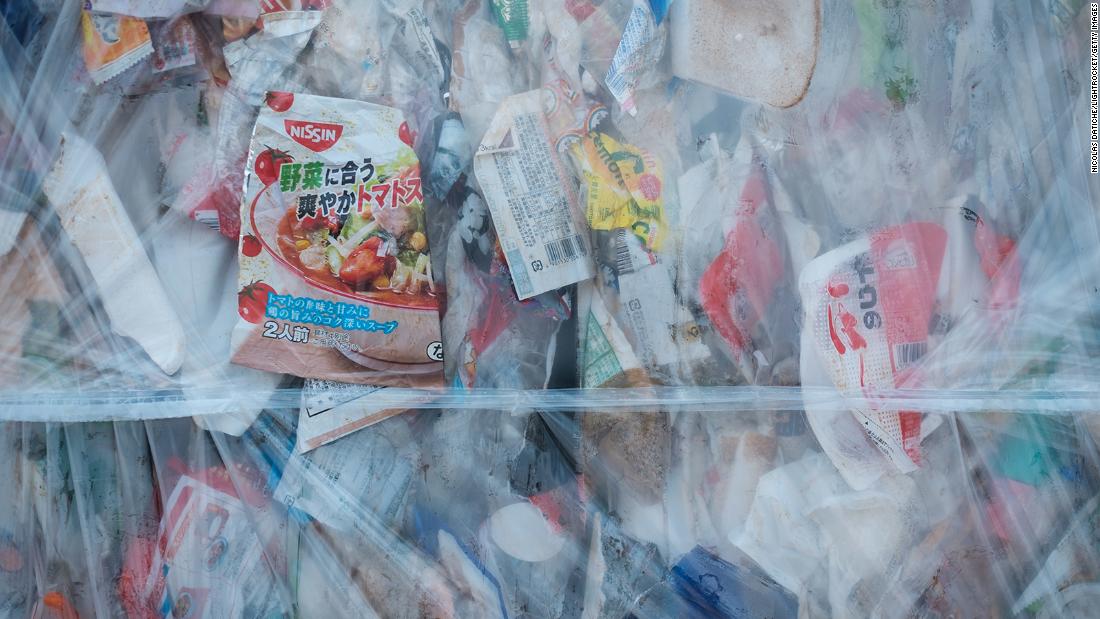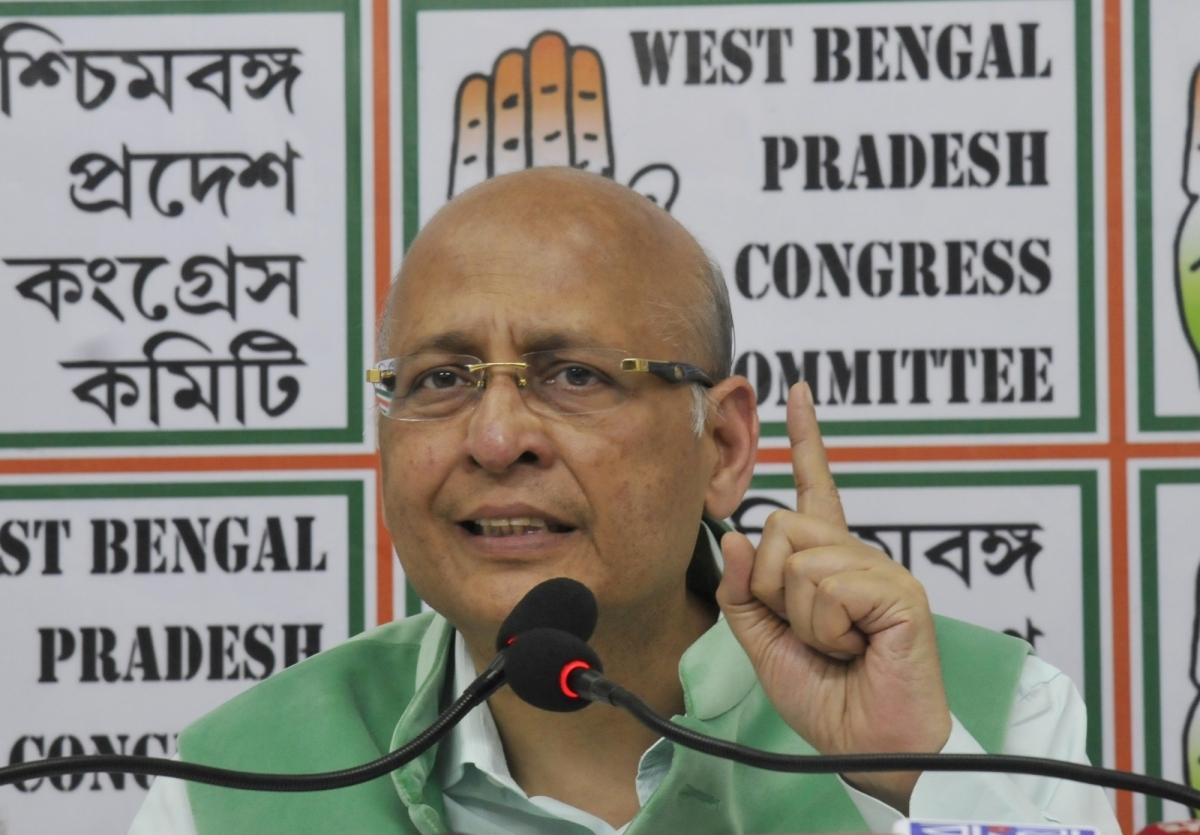It’s been that way for decades.
Retailers believe that if items aren’t wrapped in plastic it’s hard to guarantee food safety standards in the supply chain, according to a spokesperson for Lawson, a nationwide chain of convenience stores.
But Japan’s deep reliance on plastic doesn’t end with wrapping single items.
But while other countries have been waging a war on single-use plastic for years, Japan has been slow to the game.
However, that might be about to change. This month the Japanese government introduced a mandatory fee of between 3 and 5 yen (3 to 5 cents) for each plastic bag, matching a move that has already been made in the UK and the US.
Is this a sign Japan is finally ready to tackle its love affair with plastic?
The power of plastic
Japan’s obsession with plastic dates back to the ’60s and ’70s, according to Roy Larke, a professor at Waikato University and editor of market intelligence site JapanConsuming. Back then, Japan was viewed as the world’s factory, but as its economy boomed the country sought to transform its image from a maker of cheap products to a premium retailer.
Manufacturers paid more attention to packaging to appeal to consumers looking for quality, and the standards were reinforced by retailers who remain convinced that shoppers prefer elaborate wrapping.
“The big retailers see themselves as acting as arbiters of quality for the customer, so they will reject substandard packaging that is too simple,” says Larke.
The preference for packaging extends to food — for hygiene as well as appearance.
In 1993, anthropologist Joy Hendry argued in her book “Wrapping Culture: Politeness, Presentation in Japan and Other Societies” that a preference for wrapping food in plastic is an inherent part of the Japanese culture of customer service, or omotenashi.
Cheaper items can appear more upmarket when wrapped in plastic, Hendry writes. It gives the impression that a store is providing a better, more considerate service.
“Reduce, reuse, recycle?”
Japan may consume a lot of plastic, but it also promotes recycling as a noble civic undertaking, according to Jeongsoo Yu, an environmental expert and vice dean at Tohoku University.
There’s even a national mantra for it: Reduce, reuse, recycle.
But while Japan’s approach to sorting waste appears sophisticated, in reality the country’s recycling system is being overwhelmed by the sheer volume of plastic.
That sounds high — and it is — but there’s an important caveat to the figure, says Chisato Jono, a spokeswoman at Greenpeace in Japan.
When people sort their plastic waste and throw it out, they assume it is turned into a new plastic product, says Jono.
That, however, creates another problem. Jono says once Japan’s plastic waste passes into another territory, it’s impossible to know how other nations manage it. “We don’t know if (the plastic) is being recycled properly in ways that don’t affect people’s health in the process,” she says.
But with China banning plastic waste imports in August 2017, plastic waste is piling up in Japan, with many storage facilities reaching saturation levels, according to Yu.
For instance, in 2017, Japan exported around 75,000 tons of plastic waste to China. That figure fell to 45,971 tons in 2018, following Beijing’s ban, with Japan redirecting plastic waste exports to Taiwan, Malaysia, and Thailand, according to a spokesman at the Plastic Waste Management Institute.
Those countries are moving to reduce plastic waste imports, but don’t have an outright ban — yet.
Yu, the environmental expert, says that people in Japan usually think they’ve done their bit when they wash their plastic containers and neatly sort their trash. But in reality, the plastic waste problem will continue to grow unless people change their behaviors by, for example, refusing to buy products packaged in plastic.
“This would encourage retailers to rethink their packaging,” says Yu.
Turning to innovation
On the local level, some places in Japan have been taking action to reduce the use of plastics.
The residents of Kamikatsu in southern Japan, a town with a population of 1,490, have been following a “zero-waste” policy since 2003. The scheme aims to prioritize waste prevention by educating consumers to invest in reusable household items.
Waste — including plastic, paper, food scraps and glass — is separated into 45 categories, which can be collected, exchanged or recycled.
Residents are also encouraged to avoid single-use products through a scheme that rewards consumers with points when they refuse disposable plastic items like plastic bags, for example, says Midori Suga, a spokeswoman from the Kamikatsu council. Those points can then be banked and used to buy other reusable items, she says.
Any remaining trash that can’t be recycled — such as tissue paper — is incinerated, for now.
The future
While the nationwide plastic bag fee rule marks a major move to curb Japan’s reliance on plastics, Larke cautioned that the charge might be too low to deter repeat offenders.
“If someone has just a bit too much to carry, particularly in a convenience store, they might buy a bag. But if the fee was 10 yen (9 cents) or higher it would be different story,” he says.
Larke added, however, that consumers in Japan were genuinely committed to recycling, and that suppliers could reverse customer expectations on plastic packaging if they built that into their marketing.
Yu says there’s a need now more than ever to transition from being a “throwaway society to an eco-friendly society.” Following trends seen across much of the developing world, more Japanese people are opting to use reusable bottles and bags.
But individuals need to realize how much their attitudes can shift business models, says Jono.
“Some businesses in Japan are scared that shoppers will complain if they don’t hand them items in plastic bags, but if customers say they don’t need them, businesses will be more inclined to change, too,” says Jono.
Attitudes are slowly changing. In 2018, Japan caused a stir by joining the US in refusing to sign the G7 Pact to reduce their use of single-use plastics and prevent plastic pollution.
However, the following year Japan committed to reducing disposable plastic waste by 25% by 2030 — and to reuse or recycle 60% of all plastic packaging and containers by the same year.
Businesses are also doing their part.
Jono argues the solution isn’t to create alternative biodegrable plastics, but to think of ways of eliminating the use of plastics altogether. She cites examples of supermarkets selling rice and beans in dispensers, allowing people to bring their own containers and decide how much they want to buy. She also suggests taking a look back at what Japan did best in the past.
“Thirty years ago, Japan didn’t use single-use plastics. People used to wrap things in newspaper or transport food items in “furoshiki” (a special cloth) that could be used over and over again,” says Jono.
“My family used to bring a cooking pan to the tofu shop to carry the tofu home. We need to look back on that.”

Pop culture practitioner. Bacon expert. Explorer. Tv maven. Wannabe student. Subtly charming social media nerd.





